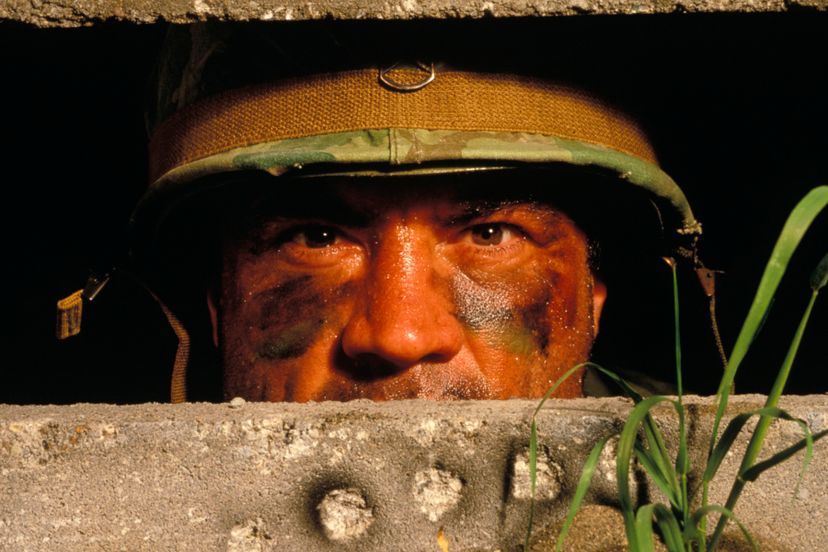
About This Quiz
War ain't easy and it's not for people who don't know what they're doing. Field commanders need a lot of smarts to figure out which military tactics to use and when. Perhaps you're familiar with some of the classical military maneuvers, such as the feint, flank, penetration and pincer.
Military strategy and tactics stretch back to the start of human warfare and the development of large governments and empires. Alexander the Great of Macedonia is one of the earlier military strategists, focusing his efforts on planning, communication and supply, security and the use of surprise. During the Middle Ages, Genghis Khan founded the Mongol Empire, the largest on Earth. The Mongol Empire covered more than 10 million square miles at one point, or about 20 percent of all of the land on the planet.
Napoleon I birthed the age of modern warfare, which included the creation of a rudimentary general staff. More recently, men like George S. Patton were hailed for their military smarts with Patton recognized for helping liberate Western Europe from the Nazis.
During all of this time, changes in weaponry and other technology necessitated constant changes in strategies and tactics. Just in the last century alone, there were debates as to whether air power alone could win wars, how best to use amphibious power, and how to strategically leverage the new and devastatingly powerful nuclear weaponry. Today, terrorism is a popular military tactic among smaller powers.
Ready to test your military tactic savviness? Then take the quiz!
Give them a bit of land and slow them down any way you can; it saps morale and causes casualties.
The stretched supply lines can slow down attackers' momentum and wear them out, too.
A breakout is often attempted when a defending force realizes it can't hold a position for a variety of reasons, such as a lack of supplies or inadequate terrain.
Advertisement
You may have to hold out longer than you think, especially if you're surrounded.
It means they are effective against vehicles even if those vehicles don't pass directly above the mine.
If an attacker cuts your supply lines on the lower slopes, you lose the advantage of the high ground.
Advertisement
The uneven lines help push attackers toward areas where defenders can fire on them from multiple directions.
The attackers hit weak points first but then get sucked into fighting stronger points; in those areas they are vulnerable to fire from more than one direction.
Duke Wellington used this type of defense to defeat Napoleon at the Battle of Waterloo.
Advertisement
Revetments are essentially retaining walls on the side of a trench that provides protection and a place from which to fire a weapon.
It offers a wide field of fire and makes any attack more difficult.
Sangars are fortifications made from rocks or sandbags, often in areas where trenches aren't possible.
Advertisement
It's one of the most common defenses used in conflict.
The Geneva Convention banned the destruction of civilian water and food supplies to prevent massive civilian casualties.
The lack of foliage and the hard desert soil means defensive preparation takes much more time and effort.
Advertisement
Sherman's troops marched from Atlanta to Savannah, Georgia. His tactics were controversial but helped the Union defeat the Confederacy.
They were so shallow they were vulnerable to bullets or attacking forces could just run over defenders using trucks and tanks.
They were sometimes called killing tunnels.
Advertisement
The trenches contributed heavily to a bogged-down stalemate, particularly on the Western Front.
It used surprise anti-tank gun attacks to quickly disable multiple tanks before they could unleash their huge firepower.
Think of soldiers standing back-to-back in a circle trying desperately to survive.
Advertisement
In this defense, defenders can see and attack the ground all around them.
Also, you have to hope that your attackers can't completely surround and then destroy you.
Thus, defenders were in a much better situation than attackers.
Advertisement
Tanks could push through barbed wire and through all sorts of defensive positions.
Civilians suffer from mines even decades after a conflict has ended.
Plus, the swirling dust helped to blind the downwind enemies.
Advertisement
It helps you use your weapons to destroy hidden guns of your attackers such as concealed artillery.
The saw used a unit just behind the front lines that shifted to areas weakened by attackers; viewed from an aerial perspective it would look like a sawing motion.
This kind of counter-artillery attack came into vogue during World War I.
Advertisement